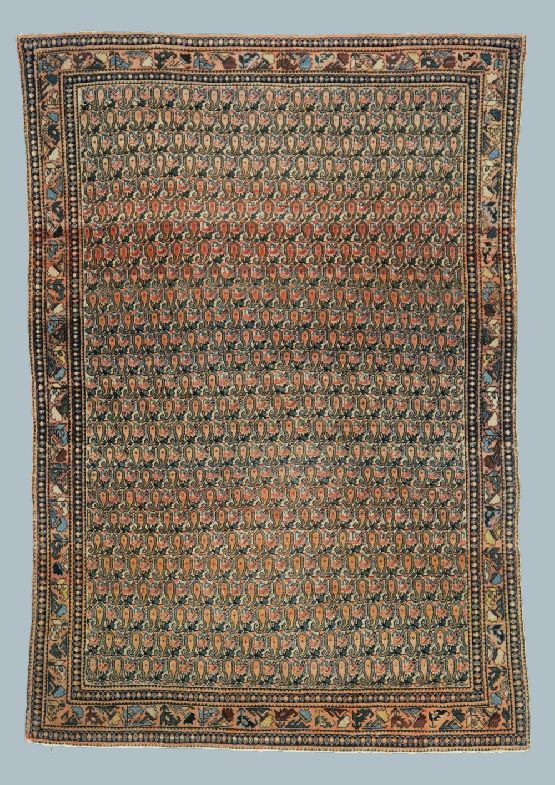code: 0388
type: persian carpets
collection: antique persian carpets
origin: iran
dimensions 95 x 142 cm
3' 1" x 4' 7"
3' 1" x 4' 7"
€5.614,75
$6,176.23
UE Citizens + Italian Vat Tax (22%)UE Companies Italian Vat Tax Free
Available from:
Morandi Tappeti
Condizione: Antico
In stock! Ordina Ora!
This carpet is in Italy - Castelvetro store
Ships in week
Ships in week
A period piece refined and very well preserved. In this case it is possible to state with certainty that the abrash make valuable the carpet. The design of this rug boteh assumes various shades of color thanks to countless small abrash that have opened over the years, these perform the magic of making up the three-dimensional drawing. Sorry taken by the beauty of the rugs often that I forget ...leggi tuttoto provide some important technical data such as the carpet is in perfect condition, which has a density of nodes among the finest of Ferahan and that is surely to be traced from the nineteenth century.
More info »
category: persian carpets
The Persian carpet is the carpet by definition, the best known and appreciated among the hand-knotted carpets. Generally named after the city or area of knotting. Kirman carpet, Kashan, Tabriz, Isfahan, Serapi, Senneh, Bakhtiari, Saruk, Sultanabad, Mahal, Ferahan, Mishan, Josan, Bidjar, Malayer, Hamadan
collection: antique persian carpets
We define the ancient carpets before the war of 1915/18. They have hand-spun wool dyed with vegetable colors, animals or minerals. In some rare cases have been used, limited to certain colors, the first aniline dyes. Saruk rugs, knotted with vegetable colors until 1930, are included in this group
The Persian carpet is the carpet by definition, the best known and appreciated among the hand-knotted carpets. Generally named after the city or area of knotting. Kirman carpet, Kashan, Tabriz, Isfahan, Serapi, Senneh, Bakhtiari, Saruk, Sultanabad, Mahal, Ferahan, Mishan, Josan, Bidjar, Malayer, Hamadan
collection: antique persian carpets
We define the ancient carpets before the war of 1915/18. They have hand-spun wool dyed with vegetable colors, animals or minerals. In some rare cases have been used, limited to certain colors, the first aniline dyes. Saruk rugs, knotted with vegetable colors until 1930, are included in this group







Your comment is awaiting moderation.